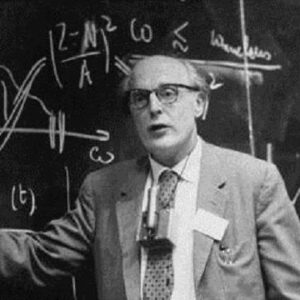Jensen, Johannes Hans Daniel, was a German nuclear physicist and a joint Nobel Laureate in Physics. During World War II, he was a member of the Uranium Club, where he worked on the German nuclear energy project. His contributions to the separation of uranium isotopes are well-known. Jensen was a professor at Heidelberg University and a visiting professor at the University of Wisconsin–Madison, Indiana University’s Institute for Advanced Study, and the California Institute of Technology. Jensen joined the National Socialist German University Lecturers League, or NSDDB, during Hitler’s ascent to power, despite the fact that membership was not required. For two years, he was also an active member of the National Socialist Teachers League. Jensen belonged to the National Socialist German Workers Party (NSDAP) (NSDP). He was also a member of the Heidelberg Academy of Sciences, the Max Planck Gesellschaft’s corresponding member, and the Sacri Romani Imperii Academia Naturae Coriosorum’s Sacri Romani Imperii Academia Naturae Coriosorum’s Sacri Romani Imperii Academia Naturae Coriosorum’s Sacri Romani Imperii Academia Naturae Coriosorum’s Sa (Leopoldina, Halle).
Childhood and Adolescence
J. Hans D. Jensen was born in Hamburg, Germany, on June 25, 1907. Karl Jensen and Helene Ohm Jensen, both gardeners, were his parents.
From 1926 to 1931, he attended the Albert-Ludwigs-Universität Freiburg and the University of Hamburg, where he studied physics, mathematics, physical chemistry, and philosophy.
He received his Ph.D. degree from the University of Hamburg in 1932 under Wilhelm Lenz. Jensen received his Habilitation from the same university in 1936.
Career of J. Hans D. Jensen
Jensen was assigned to the University of Hamburg as a Privatdozent (unpaid lecturer) in 1937. He began working with Paul Harteck, the director of the university’s physical chemistry department and an explosives advisor to the HWA, Army Ordnance Office, the same year.
Jensen joined the project in 1939, after military control of the German nuclear energy project—Uranverein (Uranium Club)—was established, at the urging of Harteck, one of the Uranverein’s key players. Jensen worked on uranium isotope separation using double centrifuges.
Jensen was appointed extraordinary professor of theoretical physics at the University of Hanover in 1941. He was appointed ordinarius professor at the same university in 1946.
In 1949, he became an ordinarius professor at Heidelberg’s Ruprecht Karl University. He was then promoted to emeritus praecox at the university. Jensen and Maria Goeppert-Mayer both presented the shell model for an atom’s nucleus in the same year.
With Konrad Beyerle, Wilhelm Groth, and Paul Harteck, J. Hans D. Jensen co-authored ‘Über Gaszentrifugen: Anreicherung der Xenon-, Krypton-, und Selen-Isotope nach dem Zentrifugenverfahren’ in 1950.
He was a visiting professor at the University of Wisconsin in 1951.
Jensen was a visiting lecturer at the California Institute of Technology and the Princeton Institute of Advanced Study in 1952.
He was a visiting professor at the University of Indiana’s Institute for Advanced Study and the California Institute of Technology in 1953.
Jensen co-authored ‘Elementary Theory of Nuclear Shell Structure’ with Maria Goeppert-Mayer in 1955.
He was a visiting lecturer at the University of Minnesota from 1956 to 1957.
Jensen became a guest lecturer at the University of California at La Jolla in 1961.
Major Projects of J. Hans D. Jensen
Jensen’s most well-known work is his shell nuclear model hypothesis. In 1949, he and Maria Goeppert-Mayer presented it separately. According to the shell nuclear model, an atomic nucleus is made up of layers of shells of varying radii, similar to onion layers, each loaded with neutrons and protons.
Achievements & Awards
To achieve the separation effect, Harteck and Jensen devised a double centrifuge based on a rocking process (Schaukelverfahren) while working on the Nuclear project.
He was appointed honorary professor at the University of Hamburg in 1947.
J. Hans. D. Jensen won the Nobel Prize in Physics in 1963 for proposing the shell nuclear model. He split half of the prize with Maria Goeppert Mayer, while the other half went to Eugene P. Wigner for research in a different field.
He was awarded an honorary doctorate by the Technische Universität Hannover, which is now known as the University of Hanover, in 1964.
Jensen was granted honorary citizenship in Fort Lauderdale, Florida in 1969.
Personal History and Legacy
J. Hans D. Jensen died in Heidelberg, Germany, on February 11, 1973.
Estimated net worth
The estimated net worth of J. Hans D. Jensen is unknown.
Trivia
Werner Heisenberg prepared the Whitewash Certificate or Persilschein during the postwar German denazification process, explaining that Jensen joined the Uranium Club to escape academic issues. All allegations against Jensen were dropped as a result of this.


